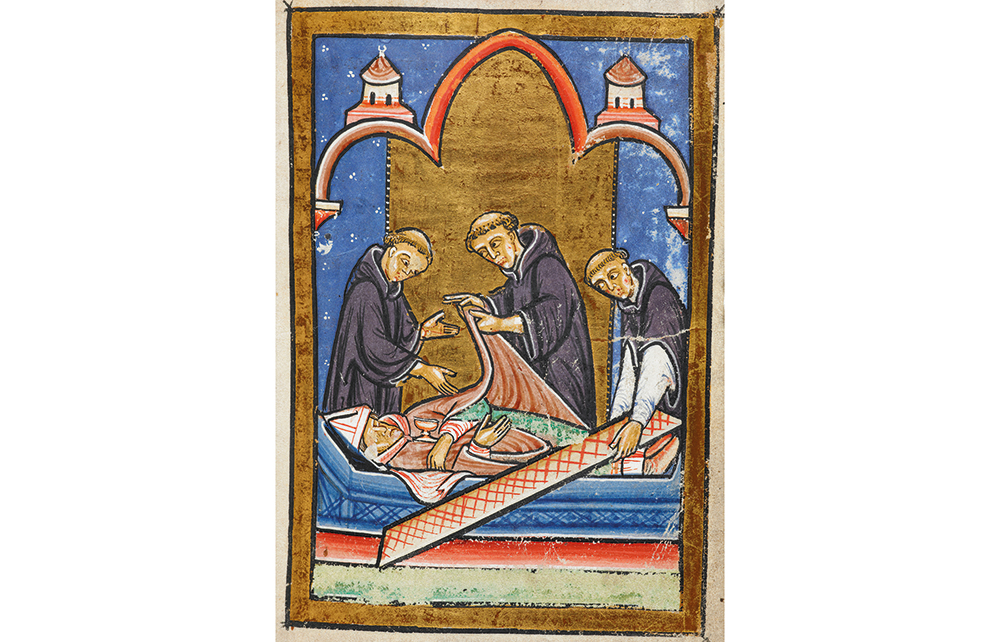Benjamin Myers had a lucky break with his 2017 novel, The Gallows Pole. First published by a small indie press, it won the Walter Scott Prize for historical fiction, garnered a two-book deal from Bloomsbury and this year is to be adapted by Shane Meadows as a BBC television series.
It’s a humble orphan girl, not one of the Lindisfarne monks, who is given a vision of Durham cathedral
He is something of a maverick – his work a mix of Hughesian lyricism and noir violence – and his success has been hard won. He has been working the literary coal face for almost 20 years, trying every kind of genre while knocking on publishers’ doors and finding them shut. He responded with a new literary movement, the Brutalists – its manifesto: ‘Young, hungry and rejected by the mainstream.’
Bloomsbury has changed all that; and now here he is with Cuddy, a whacking 400-page experimental novel. Based on the life of St Cuthbert, it follows the saint’s progress from his death on the Isle of Farne in 687 to his much visited shrine in Durham cathedral. The quest to find a safe resting place for the saint’s bones, and the building of the cathedral, form the novel’s narrative spine.
Cuddy opens with Myers’s address to ‘Dear friends and readers’ (when did that last happen?) and his notion that ‘novels are surely spell books’. Am I spellbound? A little. The book is a dazzling compendium of styles: poetry, prose, dramatic dialogue and even an epistle or two. I liked the furthering of the story by the interleaving of bibliographical references, from Bede to Simon Schama, which one might usually expect to find either in footnotes or as an appendix, but I suspect that’s because I’m of the ilk who might turn to acknowledgements before the first chapter.
The poetry of Book I is nicely Anglo-Saxonly alliterative. The saint, not long dead and ‘fizzy with joy’, converses with Ediva, an orphan girl who cooks for the Lindisfarne community. The monks, ‘swift with their swaddling’, have rescued the saint’s body from the ‘devilish Danes’ and are about to carry it for hundreds of years, and pages, to its eventual resting place in the cathedral.
This is also a novel about visions, and how the life of the past haunts the present. Needless to say, it’s the humble Ediva and not one of the monks who is given a vision of the cathedral. As the story moves through the centuries, the cook is reincarnated as Eda, a stonemason’s wife (1346), as Edith, a cathedral housekeeper/angel (1827) and as Evie, a student waitress in the cathedral’s café (2019) in the rather soppy final pages. Her original companion, Owl Eyes, appears in later sections as a husband and ultimately as ‘the Daft Lad’, either a monk-to-be or a historian.
There’s much to enjoy in the novel’s linguistic beauty – the cathedral itself becomes a voiceover in a play about the Scottish soldiers, ‘honey-fed farm boys and moor-top dreamers’ gaoled there in 1650 – and thorough research. Thankfully there’s none of the gruesome violence of The Gallows Pole. Instead, Cuddy explores the endurance of goodness and grace. English Heritage are about to reveal a memorial to St Cuthbert on the spot of his original tomb at Lindisfarne Priory, which just goes to show.






Comments